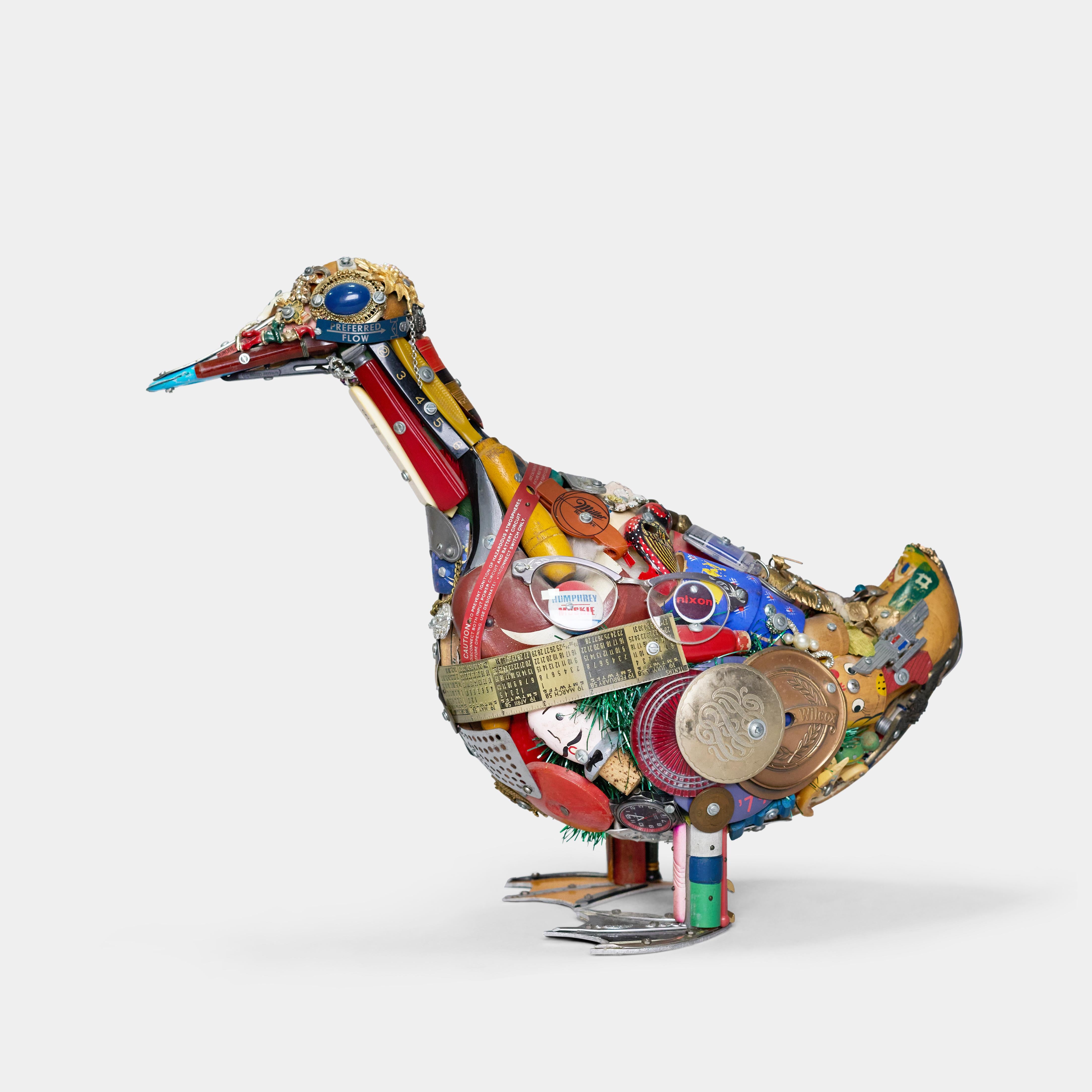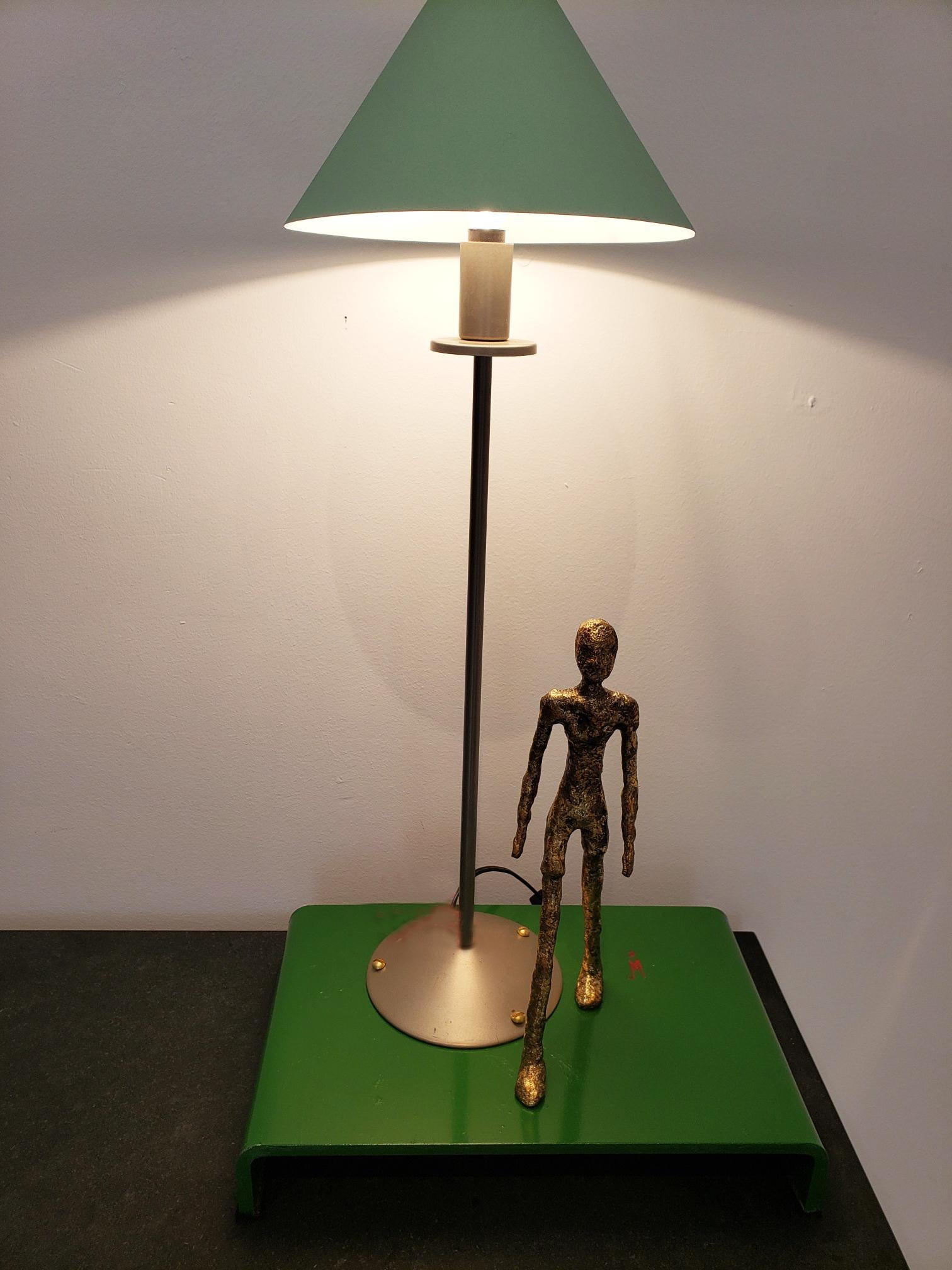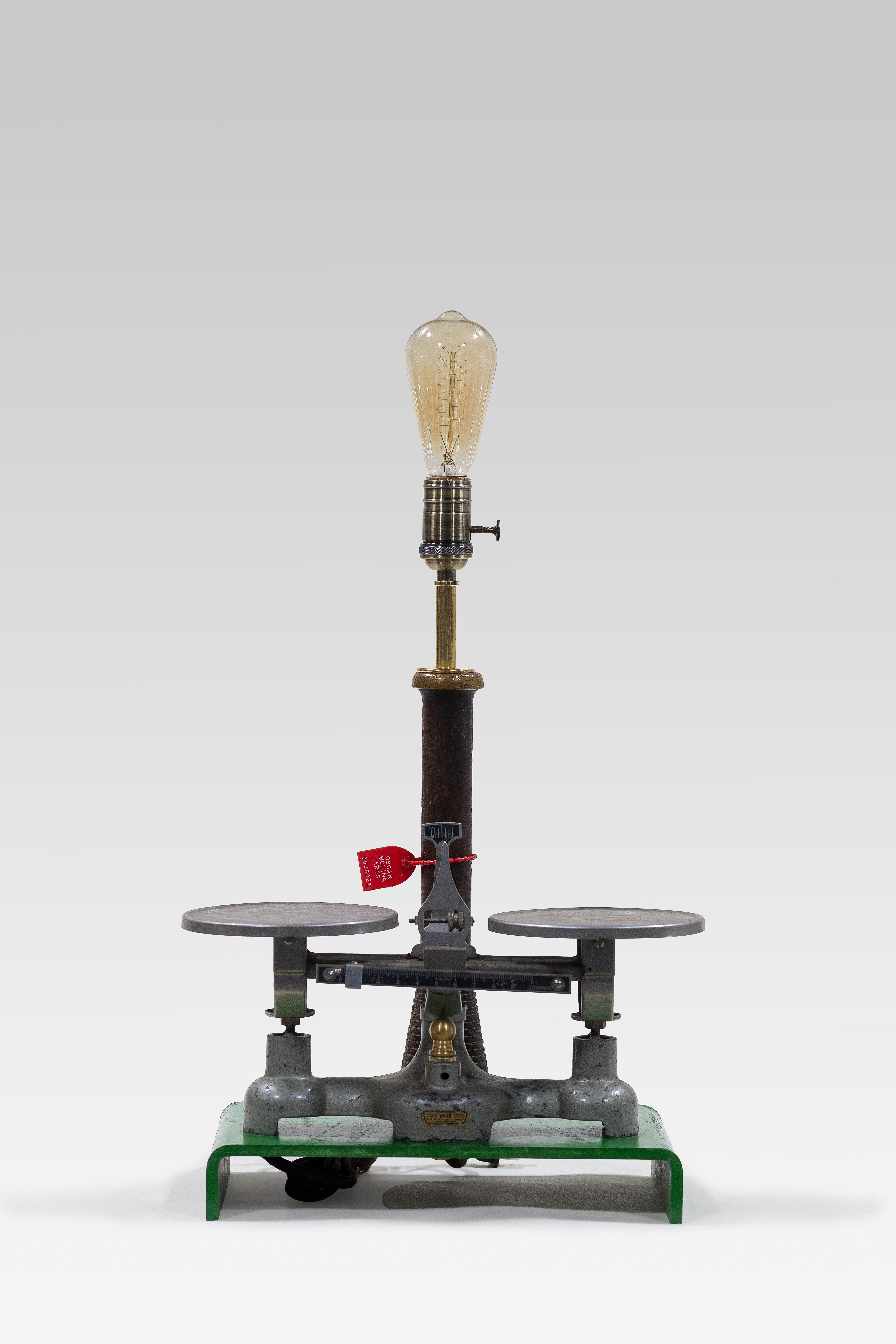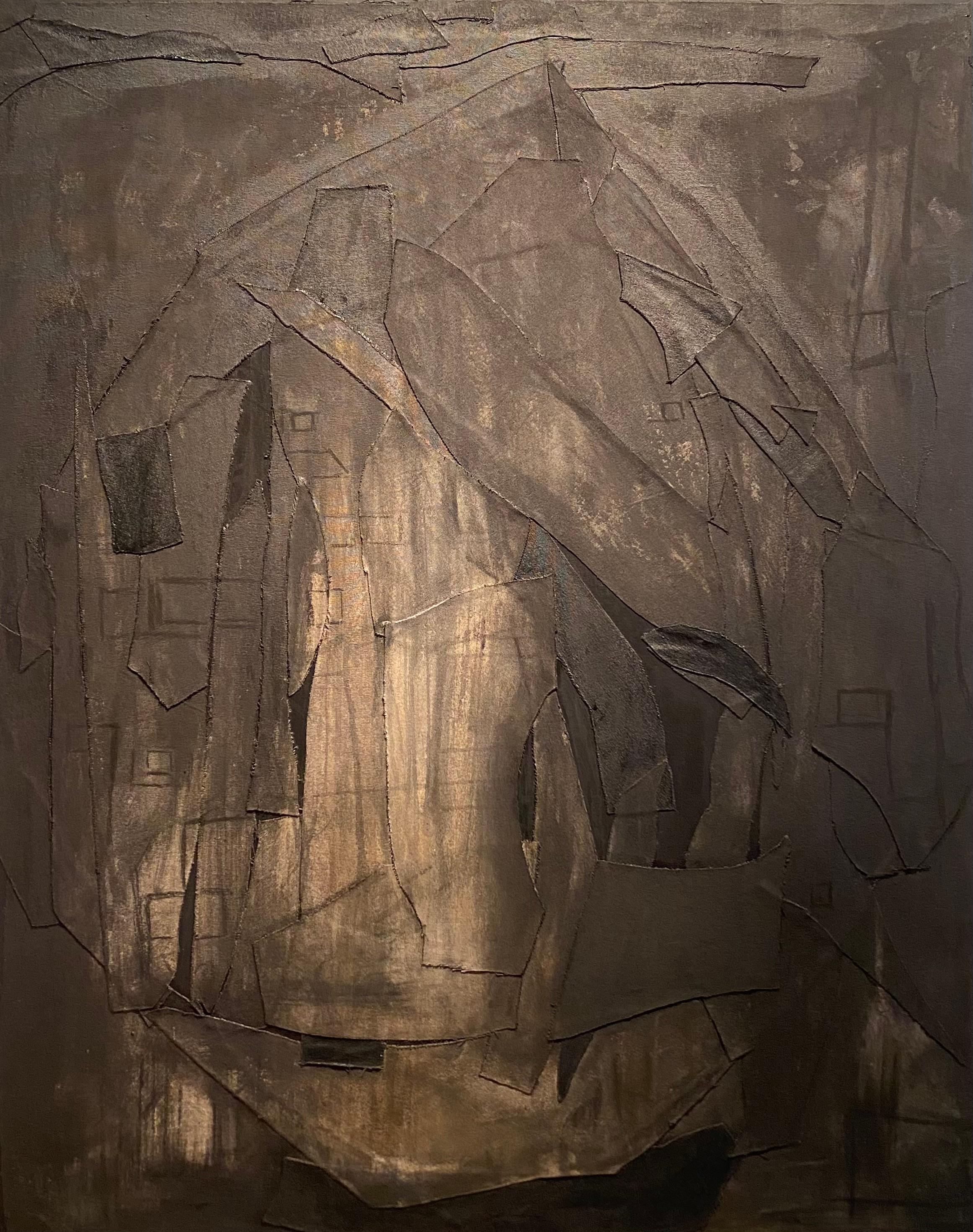Items Similar to Feliciano Bejar REHILETE #2 Mixed Media Avant Garde Artwork
Want more images or videos?
Request additional images or videos from the seller
1 of 5
Feliciano BéjarFeliciano Bejar REHILETE #2 Mixed Media Avant Garde Artwork1980
1980
About the Item
Genre: Latin American
Subject: Abstract
Medium: Mixed Media, Collage
Country: Mexico
Dimensions w/Frame: 16.75 x 16.5
Feliciano Béjar Ruíz (1920 – February 1, 2007) was a Mexican artist and artisan, best known for a style of sculpture called “magiscopios” which involved various materials along with crystals and/or lenses to play with light or create distorted visions. He was born in rural central Mexico and was completely self-taught as an artist. He was creative as a young child, drawing and creating his first sculpture like pieces from papier-mâché. His art career began in New York, where he had travelled and lived for a time in Hell’s Kitchen. His drawing the attention of Arthur Ewart and Frances Coleman, with the latter helping him have his first exhibition and whose husband helped sponsor his time in Europe. In his later life, Béjar withdrew from the art world for about sixteen years, disillusioned with it and retreating to his ranch in the State of Mexico. He returned in 1998, with a retrospective of his work in Mexico City and continued to show his work until shortly before his death.
He worked as an assistant to a carpenter, sweeping out the shop in exchange for wood scraps. He used these to create toys and even large imaginary cities.
When he was fifteen, he began to teach himself art using various scrap materials. At this time muralist José Clemente Orozco was in his town to paint scenes of the Mexican Revolution on the town library. Bejar brought him some drawings to show, he did not want to see them. Later in life he stated that he did not think well of the muralists and considered them false and frauds. He said that their work was supposedly for the people but they could not be understood without interpretation and the main ones (Rivera, Siqueiros and Orozco) shut out other artists.
When he got to New York in the 1940s, he was disappointed and thought it ugly. He wanted to return but had no money so he had to work menial jobs and live in Hell’s Kitchen. During this time in New York, he was put in touch with English painter Arthur Ewart who encouraged him to get back to art, particularly painting. He also met socialite Frances Colman, while copying paintings at the Metropolitan Museum of Art, who helped him get started selling his work. In 1947, he returned to Mexico. Coleman helped him have an exhibition in New York and in 1949, Béjar traveled to Paris and bicycled through Europe to study the art in the museums there, sponsored by UNESCO and Coleman’s husband. He returned again to Mexico in 1950.
He returned again to Europe in 1956, where he painted and worked as a movie extra and radio announcer.
In 1960, Béjar met Englishman and historian Martin Foley, who had come to Mexico to study. They remained friends for over forty years and lived together at Béjar’s ranch until his death, with Foley writing Béjar’s biography. Foley never entered Béjar’s studio because he was concerned with stepping on something.
However, he considered himself an artisan first, valuing his skills as a carpenter, metalworker and bricklayer, rebuilding the house and gardens himself.
In the early 1990s, he withdrew from his art career, disillusioned by the art work, and in 1993, he was confined to a mental facility by his family involuntarily. Although he left the hospital some time later, a number of his family members still considered him crazy.
Béjar was considered to be an environmentalist. One reason for this was that in his early career, he had a sign in front of his house offering to take used materials for his art, and received much. It made him reflect on how much is wasted. His interest in ecology was also spurred by his time in Mexico City, when he lived for a while near Paseo de la Reforma, seeing how its trees and old mansions were deteriorating.
Béjar died in Mexico City on February 1, 2007, of heart failure while in a hospital for tests. He was 86. He left behind about 100 unfinished pieces because of his system of working. He was buried at his ranch in the State of Mexico. Much of his finished and unfinished work is now in the hands of Martin Foley.
Although Béjar did painting, handcrafts and even trades, he is best known for his sculpture, especially a class of sculpture called “magiscopios.” These were created with metal, glass, crystal, plastic and resins, and feature crystals and lenses that distort the onlookers view. He created the first of these with waste metal and other scraps. After he created his first one, he invited Paco de al Maza, Justino Fernández, Salvador Novo and others for dinner. After seeing the work they thought about names with Jorge Hernández Campos coming up with “magiscopio.” When Béjar exhibited these magiscopios at the Palacio de Bellas Artes in 1966, he signified a break for a generation of avant garde sculptors, and from traditional Mexican sculpture. The magiscopios brought Béjar fame and many of them were copied and reproduced; however, their popularity meant that no one wanted to see his paintings, which bothered him.The popularity also meant that he stopped making them from scraps, especially when he was hired as an artist-in-residence for Carburandum in the US, their first from Latin America. He signed a contract for five years which allowed him to work at their factory and work with larger pieces of materials.
Béjar’s art career began as a painter, and began in New York where he had his first individual exhibition of 18 paintings at the Ward Eggleston Gallery in 1948.However, this success did not open doors for him in Mexico when he returned, not being able to do so until he had the support of the Instituto Mexicano Norteamericano. This show brought his work to the favorable attention of Mexican art critics. However, over his lifetime he had over 150 individual exhibitions and his work appeared in about 100 collectives ones, both in Mexico and abroad. He had a sixteen-year break in exhibiting his work until 1998,when the Instituto Nacional de Bellas Artes sponsored a retrospective. They wanted to have it at the Palacio de Bellas Artes or the Museo de Arte Moderno, but Béjar refused, stating that these avenues were too closed to new artists, so instead it was held at the Museo de Arte Carrillo Gil.
He received a number of awards but stopped accepting when the Bank of Mexico asked him to purchase the medal he was awarded because they lacked resources. He also became disenchanted with the attention given to him by politicians including Mexican presidents He was a member of the Salón de la Plástica Mexicana
Béjar was a prolific creator and while much of his production has been acquired for permanent collection, much is in the possession of his longtime friend Martin Foley. At least 75 of his works are part of major museum collections in Brazil, the United States, Great Britain and Israel.
Since his death in 2007, there have been events to pay homage and exhibitions of his work, including a 2010 homage and conference at the Liberator Miguel Hidalgo y Costilla Cultural Center in his hometown in Michoacán and a major exhibition of his work at the Museum of Light in Mexico City in 2013. There have also been efforts to create a formal museum in Béjar’s memory. His former home in Michoacán has been opened to the public and contains a collections of his paintings, sculptures and handcrafts.
While best known as a sculptor, he was also a painter, artisan and a tradesman, not seeing differences between artist and artisan, instead considering them inseparable. He worked with various techniques such as painting, drawing, engraving and sculpture in wood, ceramic, soldered metal, bronze, stone, stainless steel, crystal and plastic. He defined himself as a creator who did not belong to the artistic elite on Mexico. Although not considered part of the Generación de la Ruptura, his work did open new avenues for artists in Mexico. He was noted for his use of geometry, transparency and light and was contrarian in various aspects. For example, he began to work in terracotta when many artisans were dismissing it in favor of porcelain.
- Creator:Feliciano Béjar (1920, Mexican)
- Creation Year:1980
- Dimensions:Height: 16.75 in (42.55 cm)Width: 16.5 in (41.91 cm)
- Medium:
- Movement & Style:
- Period:
- Condition:
- Gallery Location:Surfside, FL
- Reference Number:1stDibs: LU38211602552
About the Seller
4.9
Platinum Seller
These expertly vetted sellers are 1stDibs' most experienced sellers and are rated highest by our customers.
Established in 1995
1stDibs seller since 2014
1,543 sales on 1stDibs
Typical response time: 1 hour
- ShippingRetrieving quote...Ships From: Surfside, FL
- Return PolicyA return for this item may be initiated within 3 days of delivery.
More From This SellerView All
- Bill Haendel Americana 'A Child's War' Cast Paper Relief SculptureBy William HaendelLocated in Surfside, FLGenre: Modern Subject: Abstract Medium: Other Surface: Paper Country: United States Dimensions w/Mat: 20" x 21" Bas relief on hand-made paper; Visual statement of society’s role in...Category
1970s Modern Figurative Sculptures
MaterialsMixed Media
- Mixed Media Sculptural Painting "Unicorn" Chicago Jewish ModernistBy Alexander Raymond KatzLocated in Surfside, FLGenre: Modern Subject: Abstract Medium: Mixed Media Surface: Board Dimensions: 28.75 X 24 (size includes frame. signed with initials and bearing a label verso. Reminiscent of the Ar...Category
Mid-20th Century Modern Mixed Media
MaterialsMixed Media
- Milk Weed, Flowers Mixed Media Collage Monotype Floral PaintingLocated in Surfside, FLMixed Media collage Assemblage painting and or monoprint or monotype on BFK Rives French art paper. It depicts a wild profusion of bold colored flowers Education 1976 Stanley Hayter Atelier 17 Workshop, Paris, France 1975 Hugh Stoneman Workshop, London, England 1974-85 Bob Blackburn Printmaking Workshop, NYC 1972-74 Certificate of Completion in Fine Arts Graphics, The Art Students League of New York, New York, NY 1971-72 The Art Institute of Boston, Boston, MA 1970-71 Green Mountain College, Poultney, VT it was the League where Martha Bloom...Category
1980s American Modern Mixed Media
MaterialsMixed Media
- 1970s Jerusalem Street Scene Silkscreen Lithograph Ivan Schwebel Bezalel ArtistBy Ivan SchwebelLocated in Surfside, FLArtist: Schwebel, Ivan (Israeli 1932 - 2011) Ivan Schwebel, Painter. Was born 1932, U.S.A. and immigrated to Israel 1963 after living in Spain, France and Greece. Studies: 1953-55 with Kimura Kyoen whilst serving with the U.S.Army in Japan; 1955-61 Institute of Fine Arts, with Philip Guston; New York University. Larry Abramson, who is very much in the mainstream of Israeli art, curated an exhibition of Schwebel’s work at the Jerusalem Print Workshop in the early 1980s; in the accompanying text, he described him as “an artist from the New York School ship-wrecked on a hill near Jerusalem.” IN SCHWEBEL’S BEST WORK, THE paint speaks for itself: the pools and explosions of rich color, achieved with pigment that he would grind and mix himself, the luminous figures emerging out of dark shadows, the quirky, dramatic compositions. Schwebel was erudite, with a passion for the bible and Jewish and Israeli history. He delved into all of it for his subject matter, bringing together characters and narratives regardless of time, and setting them in modern- day Tel Aviv or Jerusalem, the Judean hills, or New York City. He liked to play with ideas, and thoroughly mixed his visual metaphors. He showed David and Bat-Sheva next to a Nazi deportation train, and Job despairing over his relationship with the Palestinians. He based his characters on photographs of himself, friends and family, or movie stars. On his website, he describes a series of paintings about anti-Semitism in which the Holocaust is merged with the Spanish Inquisition: “Abarbanel who tried to negotiate with Ferdinand and Isabella is reincarnated in Rumkowski – the German appointed Head of the Lodz Ghetto. The bridge connecting two parts of the Ghetto is spanned over a present-day Tel Aviv cityscape. This was from a portfolio that included Ivan Schwebel, Michael Gross, Liliane Klapisch and Moshe Kupferman, five of Israel's leading contemporary artists who were each approached in May 1977 with a request to contribute a hand-printed screenprint for a portfolio to be titled "Jerusalem". The sole term of reference was the name "Jerusalem", with no qualifications at all. The five artists then spent time working completely independently and individually on the project at the Jerusalem Print Workshop. Each screenprint was hand-signed by their respective artist and numbered from the edition of 200, hand-printed on BFK Rives paper Published by Whartman and Sacks Art Publications His “Tel Aviv” series, in contrast, is fun: “Chen Cinema” shows a couple of actors who seem to have stepped out of an old romantic movie to cuddle in the shabby street outside the cinema. In his final “Safe Place” series of paintings, he goes beyond self-conscious narrative to create his own Garden of Eden. Select Group Exhibitions: Landscape and Nature: Contemporary Israeli Prints from the Collection of The Israel Museum, Jerusalem. High Court of Australia, Canberra, Australia Artists: Abu Shakra...Category
1970s Modern Mixed Media
MaterialsMixed Media
- Unique Mixed Media on Handmade Paper with Gold Leaf Modernist EditionLocated in Surfside, FLThis is a unique mixed media edition of 50. on handmade paper with fabric, gold and other elements. Raised and educated in New York, Pat Hammerman is an ...Category
1980s American Modern Mixed Media
MaterialsMixed Media
- Modernist Rabbi Mixed Media Painting on Newsprint Spertus Museum DeaccessionLocated in Surfside, FLProperty from the Spertus Museum, Spertus Institute of Jewish Studies, Chicago, IllinoisCategory
20th Century Modern Mixed Media
MaterialsMixed Media
You May Also Like
- Red and blue paint tubes. Mixed MediaBy ArmanLocated in Paris, FRUntitled Acrylic and paint tubes on resine Provenance : - Galerie Bernart, Antwerp - former collection of the Dutch Cobra artist Corneille (Cornelius van ...Category
1970s Modern Mixed Media
MaterialsMixed Media
- The Eagle Flies On FridayBy Francis X PavyLocated in Lafayette, LAEntitled The Eagle Flies on Friday, this work on paper depicts a Bald eagle flying in the late afternoon on a Friday. The two guitars crossed in the upper left-hand corner and a French accordion hidden in the left bottom right corner give a celebratory feel to the image. A distant flock of purple swifts inhabit the right upper middle portion of the image. A purple indigo plant overlays the turquoise Spanish guar on the left. Undulating light blue lines depict water flowing overlay an emerging dark blue palmetto partially obscuring the accordion on the bottom right corner. A blue orb above the eagle symbolizes the New Blue moon signaling new beginnings. This is a unique multiple oil relief print on paper. Unique. because it's one of a kind. Although printmaking processes are used there are no multiples made. Only one. This work is made by printing with different relief blocks multiple times, brush painting, and airbrushing. The ink and paints used are oil-based. Because of the multiple printing techniques, the reverse contains notations in graphite pencil, and ink colors to be used on blocks. Also on the reverse, there is residual ink from the printing process. Signed and dated en verso ( on the Back). Writing on the back reads THe Eagle Flies on Friday (title) ©2014 Francis X Pavy...Category
21st Century and Contemporary American Modern Mixed Media
MaterialsOil, Mixed Media
- DuckBy Leo SewellLocated in Los Angeles, CAA wonderful Mixed media sculpture of a duck by the noted Philadelphia artist Leo Sewell. This is an early example from the Master of found objects. He worked with recycled objects to...Category
20th Century Modern Mixed Media
MaterialsMixed Media
- Walking ManLocated in Southampton, NYJ. Oscar Molina is a painter and sculptor as well as Founder of Oscar Molina Gallery in Southampton, NY. He is most well-known for his “Children o...Category
21st Century and Contemporary Modern Mixed Media
MaterialsMetal
- Heavy Weight #21Located in Southampton, NYJ. Oscar Molina is a painter and sculptor as well as Founder of Oscar Molina Gallery in Southampton, NY. He is most well-known for his “Children of the World” series which is compris...Category
21st Century and Contemporary Modern Mixed Media
MaterialsMetal
- Zion 4 Contemporary Abstract Mixed Media PaintingBy Debra FerrariLocated in Dallas, TXInspired after hiking Zion National Park, Debra Ferrari ceated a series of paintings capturing the feeling of the volcanic rocks, water pools, waterfalls, cliffs and botanicals seen ...Category
2010s Modern Mixed Media
MaterialsAcrylic, Mixed Media
Recently Viewed
View AllMore Ways To Browse
Large Media
Mixed Stone
Large Mixed Media
Large Mixed Media Art
Avant Garde Art
Large Mixed Media Paintings
Vintage Style Artwork
Country Artwork
Traditional Artwork
Large Modern Artwork
Avant Garde Painting
Modern Mixed With Vintage
Mixed Media Paris
Early American Artwork
Large Vintage Artwork
Heart Artwork
Bronze Artwork
Mixed Media Still Life




